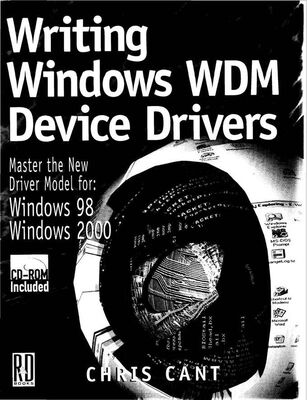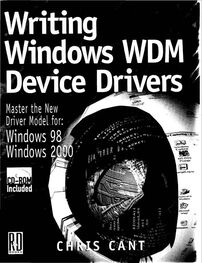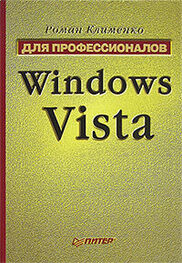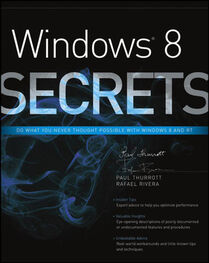The Windows Driver Model defines one basic model to handle all these types of data. In effect, the model is extended for each type of device. For example, the USB class drivers provide an abstract model for all USB devices, with a defined interface that is used by all client drivers. Having a core driver model that is common to all device types makes it easier for driver writers to move from one type of device to another. And it also means that the kernel implementation of the driver model is more likely to be solid. Having a different model for each type of device would almost certainly make life harder for us.
Is this extensible core model too complicated? If you are writing a monolithic simple low-level driver, I think that IRPs will appear to you as quite difficult beasts. Supporting Plug and Play properly is a task too onerous for simple drivers, as described in the following text.
Complexity
Any discussion of device drivers can be fairly "heavy". By their very nature, you have to interact with complicated hardware systems that may have exacting timing constraints. Any operating system interface to hardware will have a complicated job to do. Another factor is that each type of device is different, so you need to know about the details of its technology, including its hardware implementation. For example, the network device drivers field is a subject that can easily fill a whole book. All this means that any aspiring device driver writer will have a steep learning curve.
Plug and Play and Layers
When Plug and Play is first described to you, it will probably sound fairly straightforward. You are told when a device arrives. You are told when it leaves. However, some of the follow-on implications are hard work for device drivers. In a brief look, I am not convinced that any of Microsoft examples do the job fully.
The first problem is that the sudden removal of a device will interrupt a whole host of activities that your driver may be doing. However, I guess that there is no easy way round this.
A stickier problem occurs when the Plug and Play (PnP) Manager tries to juggle the system resources when a new device is inserted. The PnP Manager can ask to "stop" your device (i.e., pause it while your resource assignments are changed). Again, this may interrupt the current flow of operations. However, more importantly, you are supposed to queue up any received IRPs while your device is stopped [3] You are also supposed to queue IRPs that arrive while your device is sleeping. The simple solution to this problem is to wake up your device when an IRP arrives.
. At worst, the user is only supposed to experience a tiny delay in the functioning of a device that is paused temporarily. However, implementing an IRP queue is not a trivial exercise, especially as you have to be prepared for the worst. For example, if a device is removed while stopped, you will have to chug through all the queued IRPs completing them with an appropriate error status. (The Ks… series of Kernel Streaming IRP handling routines might provide all this functionality.)
Another potential criticism of the Plug and Play system is that too many layers of drivers are involved. Passing requests between layers can take some time. If a request has to pass through many layers of filter drivers, it could have a noticeable effect on performance.
Range of Functionality
For good reasons, device drivers cannot use many standard C or C++ functions. This makes it more complicated for driver writers as they have to learn what routines to use instead. I find the Unicode string handling routines particularly unwieldy.
I understand that Microsoft is trying remove some older areas of functionality. For example, WMI is effectively going to replace NT events. However, you have to support both in the mean time, which is more effort.
Development Environment
There is plenty of documentation available in the various DDKs. However, it is slightly confusing to have Windows 98 and Windows 2000 DDKs covering the same subject. As is usual, the documentation lags a few months behind when any new developments arise, which can be frustrating. It is worth while checking the relevant Microsoft websites regularly for appropriate articles.
The provision of lots of example source in the DDKs is great. Give us more! These show how real drivers work and show us how to use various kernel calls and techniques.
The driver build environment is still essentially command line. Although it is easy enough to provide a Visual Studio wrapper for this build environment, a fully integrated system would be appreciated. The provision of a nice debugger that can be run on the same computer as the driver you are testing would be a boon.
Developer Support
You will have to make do with the DDK documentation and any colleagues that you can find to help out. First, scour the DDKs, the DDK source, documents in the DDK source, the Microsoft website, and the Platform SDK. Your next port of call might well be the newsgroups and mailing lists. Finally, you can pay Microsoft for help.
In this chapter, I have tried to give the device driver big picture, showing what components your driver will need and how it fits into the general scheme of things. There are different types of device driver and different ways of implementing the same driver functionality. Some driver components are not compulsory, but it is certainly recommended that you support Plug and Play, Power Management, and Windows Management Instrumentation, if possible.
A crucial part of the Windows Driver Model is the provision of several bus and class drivers. These make it considerably easier to write many types of driver.
In the next chapter, I will look at the crucial background concepts that are needed before device driver development in earnest.
Chapter 3
Device Driver Design
This chapter introduces the basic concepts and structures that you will need to write drivers. Some ideas are sufficiently important and deserve to be mentioned now. All the other techniques, routines, and objects are covered in the following chapters.
Windows uses a layered design for passing requests from the end user to a driver stack and eventually to the hardware. As a trusted part of the operating system, a driver must be written well to fit into the kernel. It should use the kernel's abstract model of the processor and use memory carefully. Wherever possible, a driver should use the recommended techniques, routines, and structures.
A good device driver needs to be well written. Remember that it is a trusted part of the operating system. The PC will not get the protection that a normal Win32 application has. If anything goes wrong, it is likely that the system will crash, or worse — destroy valuable data before crashing.
For important projects, my ultimate design philosophy is to design code three times. At the outset, it is definitely worth while knowing where I am going and what features I am going to implement. I then prefer an incremental approach, in which each individual section of code is designed as I go along. However, as with many programs, it often only when I have finished a first-cut prototype of the whole driver that I really understand what is going on.
Doing some real hardware interactions might invalidate some of my initial design decisions. Similarly, I might decide to expose an IOCTL interface instead of reads and writes. In the end, it might be best to scrap some sections of code and start again [4] I used this approach when writing this book. My initial contents were completely different from the end result, and I rewrote these initial chapters after the rest of the book was complete.
.
Читать дальше





